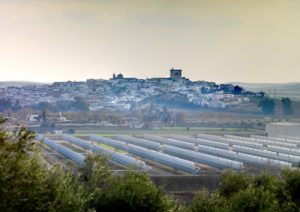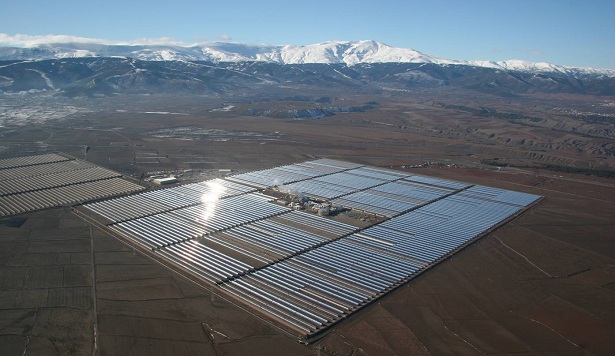In the light of the EU 2030 climate & energy framework, MUSTEC (Market uptake of solar thermal electricity through cooperation) aims to explore and propose concrete solutions to overcome the barriers that hinder the deployment of concentrating solar power (CSP) cooperation projects.

Concentrated solar power has a high potential in supplying renewable electricity on demand not only to the southern, but also to central and northern European countries. As Yolanda Lechón of the Spanish Research Centre for Energy, Environment and Technology (CIEMAT) and MUSTEC project coordinator says: “Our key objective is to identify and overcome the barriers that limit CSP’s expansion in Europe. At the same time, we are exploring potential drivers that can boost cooperation, as intra-European concentrated solar power trade can play an important role for the decarbonisation, stabilisation and integration of the European power system.”
Concentrated solar power competitive in the decarbonised energy market
To gauge the factors that affect the competitiveness of CSP in the European electricity market, MUSTEC researchers looked at the market environment and the future development of techno-economic parameters of solar thermal projects. In particular, this covered carbon pricing and to what extent the levelised cost of energy (LCOE) of CSP can be reduced in the future. “Based on LCOE, CSP technologies can be competitive by providing an alternative option compared to other decarbonised generation technologies (PV or wind onshore plants), especially if we take into account its high storage potential. The technology may provide over 4 hours of storage,” Lechón points out.
Besides targeted R&D efforts, a major lever to lower the LCOE of CSP is to decrease investment costs. MUSTEC is aware that there is a need for financing packages for CSP projects as well as an investment framework that lowers the associated risks.
“The main competitive advantage of CSP is the dispatchability of the generated electricity,” emphasises Lechón. Flexibility is the keyword here and MUSTEC has worked towards appropriate pricing and ambitious energy and climate policies that reflect the value of CSP manageability.
MUSTEC strategy reflects on success in Spain
Spanish project partners have advised the government by providing scientific support for CSP expansion policies in Spain. Specifically, CIEMAT has provided advice on construction of the energy planning tool TIMES-SINERGIA used in the elaboration of the National Energy and Climate Plans (NECPs) and the inclusion of CSP technology. Moreover, MUSTEC partner CSIC was required by the government to advise on the design of renewable electricity auctions, including specific considerations for dispatchable sources, such as CSP.
Significantly, geopolitical and security considerations have been brought to the fore by MUSTEC partner RIE ELCANO. These include the role of oil and gas in Spanish national strategies through in-depth exchanges with policymakers. Close contacts with the Spanish Ministry for Ecological Transition from the European Solar Thermal Electricity Association, ESTELA member Protermosolar have reinforced the interest in the technology. Regarding technological advances, Spanish partner COBRA is also coordinating some EU research initiatives such as HYSOL to develop suitable CSP hybrid configurations.
Consequently, the Spanish government has included CSP technology in its NECP. There will be an additional 5 GW of CSP in 2030, up from 2.3 GW in 2020, along with support mechanisms that could consider the system value of the technology.
Implications of the changing geopolitical and economic landscape in the wake of COVID-19
Besides being fully consistent with the spirit of the objectives of the European Green Deal, supporting CSP cooperation mechanisms will have the beneficial redistributive effects of promoting high-value-added and sustainable economic activity in southern Member States (MS).
“The coronavirus crisis has changed the EU’s internal geopolitical landscape, and energy is no exception,” Lechon points out. Increasing the integration of CSP and renewables’ exchange and cooperation mechanisms will have substantial geopolitical and economic benefits for Europe that are particularly valuable in the current crisis.
Ramping up energy security and facilitating the integration of renewable energies for example, will provide opportunities for southern EU MS that have suffered most in the recent recession. These countries have the solar resources and the technological, industrial and engineering background to profit from the construction and exploitation of CSP generation and storage facilities.
Lechón concludes: “The MUSTEC project proposes the mainstreaming and fast-tracking of CSP cooperation mechanisms as a consistent internal EU geopolitical response to the COVID-19 crisis.”


